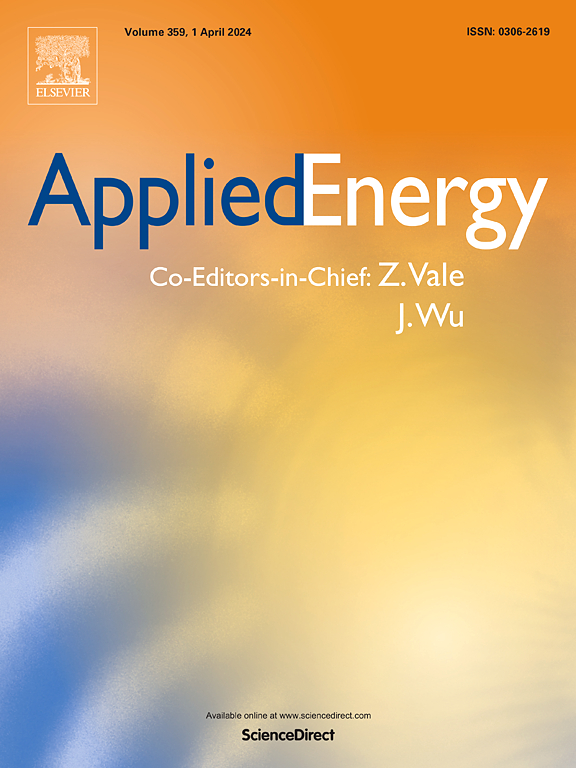Demand response programs in decentralized hybrid local energy markets: Evaluating the impact of risk-adjusted behavior of market players and the integration of renewable energy sources, using a novel bi-level optimization framework
IF 10.1
1区 工程技术
Q1 ENERGY & FUELS
引用次数: 0
Abstract
As renewable energy sources (RES) continue to rise, local energy markets (LEMs) play an increasingly vital role in enhancing system efficiency. This study introduces a comprehensive framework for assessing demand response programs (DRPs) in hybrid LEMs, where peers can trade across community-based and peer-to-peer markets, as well as the grid. To this aim, a novel bi-level optimization model is developed to minimize energy-sharing costs and maximize peer welfare by evaluating consumer and prosumer behaviors. The model considers dynamic temporal demand flexibility, enabling self- and cross-time interval adjustments over a 24-h period, allowing demand to shift, increase, or decrease in response to DRP price signals and influenced by customer risk preferences, hybrid market dynamics, and renewable energy availability. A Quality of Experience fairness index is introduced to evaluate the equity of energy distribution among consumers within the proposed market framework. A decentralized solution approach is proposed to facilitate participant negotiations, reflect individual preferences, address interactions between LEM and DRP pricing, and overcome challenges such as data aggregation, privacy concerns, and communication constraints, thereby eliminating the need for centralized optimization. The model's feasibility is validated through extensive simulations using real-time load and market price data from the Japan Electric Power Exchange in Tokyo. Results demonstrate rapid convergence, high scalability, and improved fairness. Furthermore, the availability of local RES decreases demand sensitivity to DRPs, with responsiveness, load factor, energy savings, and peak demand reduction shaped by the level of local generation and individual risk preferences. These results highlight the model's effectiveness in improving grid efficiency and maximizing benefits for participants.
求助全文
约1分钟内获得全文
求助全文
来源期刊

Applied Energy
工程技术-工程:化工
CiteScore
21.20
自引率
10.70%
发文量
1830
审稿时长
41 days
期刊介绍:
Applied Energy serves as a platform for sharing innovations, research, development, and demonstrations in energy conversion, conservation, and sustainable energy systems. The journal covers topics such as optimal energy resource use, environmental pollutant mitigation, and energy process analysis. It welcomes original papers, review articles, technical notes, and letters to the editor. Authors are encouraged to submit manuscripts that bridge the gap between research, development, and implementation. The journal addresses a wide spectrum of topics, including fossil and renewable energy technologies, energy economics, and environmental impacts. Applied Energy also explores modeling and forecasting, conservation strategies, and the social and economic implications of energy policies, including climate change mitigation. It is complemented by the open-access journal Advances in Applied Energy.
 求助内容:
求助内容: 应助结果提醒方式:
应助结果提醒方式:


